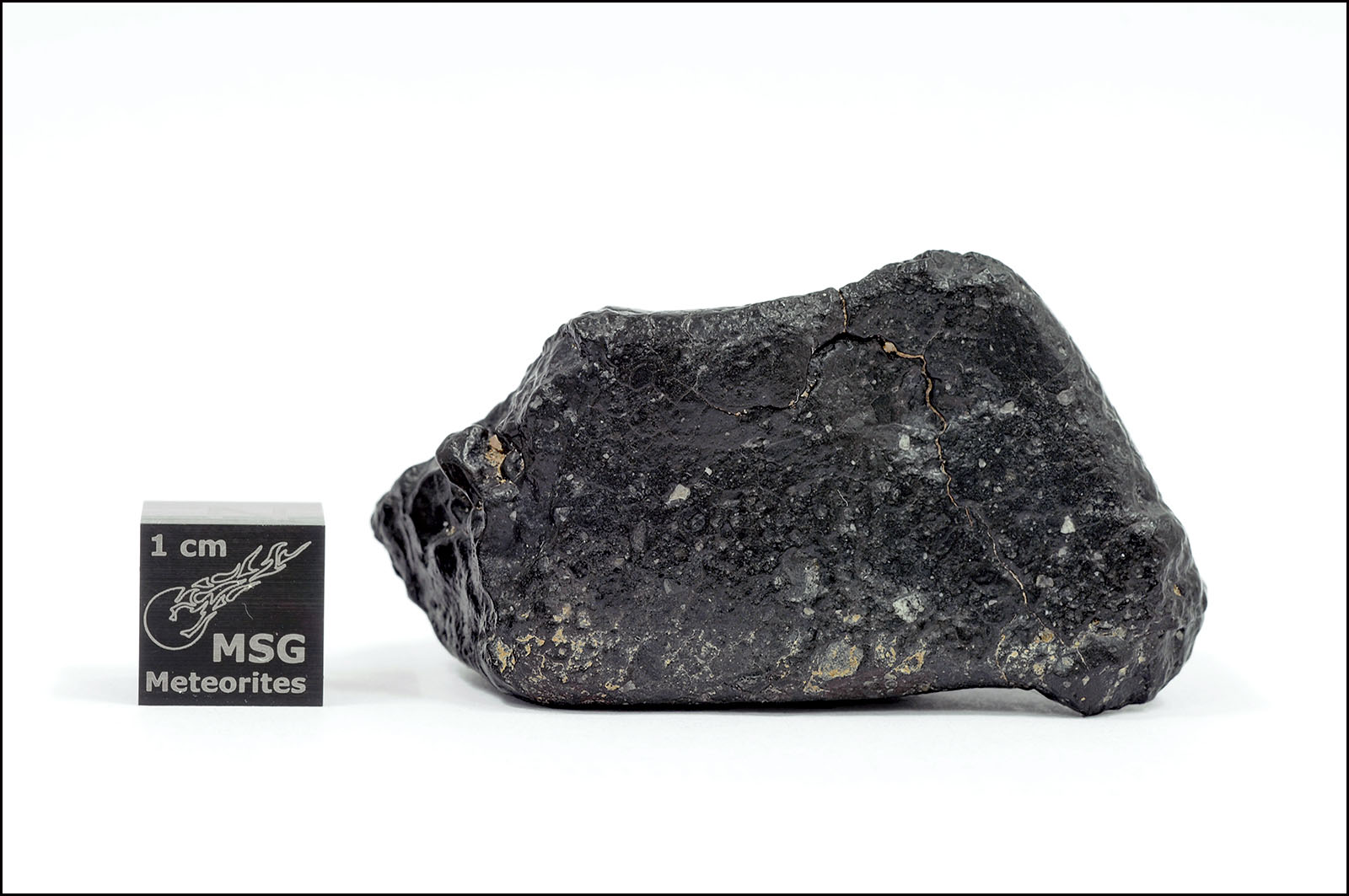|
Roll Overs:
1
2
3
4
5
6
7
|

|
See contributor's comments below.
   Martian (polymict breccia) Martian (polymict breccia)
Martin writes:
Here is NWA 11220 (provisional), a new Black Beauty pairing currently being classified by Caroline Smith, Natasha Almeida, and Agata Krzesinska at the NHM London. The stone weighs 36.62785 grams.
Black Beauty is perhaps not an obvious beauty but when you probe under the surface, beauty is really an understatement! The first sample recovered, NWA 7034, was not at first even recognised as being from Mars. Now classified as a Martian Basaltic Breccia, NWA 7034, along with a few pairings found since then is one of the most important meteorites scientifically of the last few years. One of the reasons is it’s age, 4.2 to 4.4 billion years old! There are only two Martian meteorites known to be over 4 billion years old, and those are Black Beauty and the infamous ALH 84001. Not only this but Black Beauty also contains trapped Martian water, 0.6% by weight, water that is over 4 billion years old from Mars!
Dr. Carl B. Agee, the classifier of NWA 7034, writes:
Actually this martian meteorite is much more fertile ground to look for little green men than the more famous ALH 84001. It is a breccia, has a bulk composition that is basaltic, but it is polymict with at least 6 different igneous lithologies, there are rounded objects that could be sedimentary, there are impact melt clasts, there appears to be a non-martian meteoritic component (like that found in the lunar regolith). So far there are three age dates for NWA 7034 perhaps representing major events during its residence on Mars at 1.4, 2.1, 4.4 billion years ago. NWA 7034 has 6000 ppm water, more than ten times the water in other martian meteorites. I could go on and on, but I recommend the LPSC instead, should be a great meeting. The meteoritic component idea is work by Munir Humayun and Randy Korotev. They see elevated highly siderophile elements including platinum group especially iridium. This is also seen in the lunar breccias and is thought to be from impactor(s) perhaps taking place in the ancient martian highlands early in Mars history. To my knowledge no other martian meteorites have this.
|
| |
Paul Swartz
5/15/2022 3:31:02 PM |
Shams - indeed it is. I just updated the classification on the MPOD. Thanks! |
Shams, IMCA # 9774 from Egypt.
5/15/2022 2:58:33 PM |
It is really more than beauty. It is a magnificent piece of Mars. |
| |
|